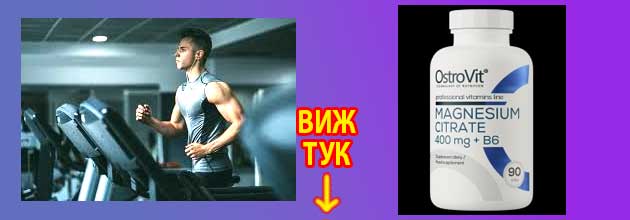Мнения за Ostrovit: положителни и отрицателни. Измама ли са добавките в България? Цени и сравнение с „Дан Колов“ и „Станимир Етов“. Коментари за протеини, креатин, Омега 3, Магнезиев цитрат, Глюкозамин, колаген.
OstroVit е сравнително нов, но вече утвърден производител на добавки и суплементи. Компанията е от Полша. Тя радва потребителите с богат набор от продукти с био и натурално качество и с достъпни цени.
При производстото на добавки компанията Островит обръща внимание на мнението на своите потребители. Тя провежда активно сътрудничество с трениращи, отчита отзивите на професионални спортисти. За да бъде в постоянен контакт с ползвателите на своите продукти, OstroVit често спонсорира спортни събития и състезания от сферата на фитнеса и културизма.
| Особености на Островит като производител | |
|---|---|
| Асортимент от продукти | предлага добавки за професионални спортисти, стремящи се към високи достижения, за любители, които активно спортуват за поддържане на формата си, и за хора, които просто обичат активния начин на живот |
| Състав и компоненти | в производстото Островит използва само суровини от натурален произход |
| Технологии и иновации | OstroVit прилага най-нови технологии и достижения на науката, като произвежда препарати от най-високо качество |
| Безопасност | всички продукти на компанията са безопасни за здравето, те съответстват на 100% на изискванията на ЕС, предявявани към продуктите за хранене; цялата продукция се тества и проверява |
| Цена | ценовата политика на Островит е да се разполага в ниския към средния ценови сектор на спортните добавкви |
| Стандарти на качество | GMP, GHР |
Доволни ли сте от OstroVit? Мнения
Почитателите на активния стил на живот могат да подобрят своето здраве и да получат добра спортна форма, ако се доверят на марката OstroVit. Професионалните спортисти имат възможност да достигнат нови високи постижения и да подобрят резултатите си. Така представят компанията в сайтовете за добавки. Но как мислят потребителите в България?

Островит днес има огромен асортимент
Във форума на bb-team потребител задава въпрос точно в десятката. Той казва: отворих сайта на Островит и останах като гръмнат от цените им. Всичко е супер евтино. Примамливо е да си накупиш всичко необходимо от тях. Но дали са качествени, струват ли си?
Отговорът е краен и категоричен. Потребител отговаря, че също е бил подмамен от ниските цени, но е имал проблеми. Използвайки BCAA на Островит, си е отворил стомашно-чревни неудачи. Последствието е било спиране на тренировките заради диария и загуба на 8 кг. Може и да не е било от Островит, неочаквано заключава човекът в своя отговор.Излиза, че ниските цени на добавките заострят вниманието и настройват потребителите да очакват и ниско качество. В тема „Измама ли са добавките в България“ в kaldata.com виждаме обоснована препоръка за Ostrovit: Много са качествени. Техният трибулус няма равен на пазара. Има и други добри продукти, но полският го усещам и на вкус, все едно съм изсипал директно билка на прах в устата си.
В българските форуми няма достатъчно мнения, за да се изведе обективно заключение, затова прегледахме и мнения от европейски и руски ползватели.
- Плюсове: качествена продукция, информация на езика на държавата, в която се продава, широка вкусова палитра, мерни лъжички, разумна цена;
- Недостатък: неудобни пакети.
Производителят на Островит постоянно се развива и подобрява продукцията си. Отначало се използват само неудобни пликове. След няколко години се пускат и флакони / кутии.
Също така радва постоянното разширяване на палитрата от вкусове. Първоначално аминокиселини, глутамин и креатинин се произвеждат само с вкус на портокал и лимон. Сега има ябълка, манго и даже кока кола. При протеините има уникални вкусове като бял шоколад, ябълков пирог и бисквити.
Полският производител се движи в крак с американските марки и започва да чисти продукцията си от глутен, а вместо аспартам и захар използва стевия.

Всяка опаковка върви с мерителна лъжица, но като правило тя е зарита дълбоко на дъното под ситно смления прах, сигнализира потребител
Голям плюс на полския производител е, че абсолютно цялата си продукция комплектова с мерителни лъжички, без значение от големината на опаковката. Особено радват големите 15-см. черпаци, които вървят с пакетите от 2.2 кг.
ВАЖНО: Вижте още мнения за OstroVit, оставете и своя отзив за добавките или попитайте ТУК, в нашия форум за протеини!
Произход и производител
OstroVit е полска компания, която се занимава с производство на добавки за спорта. На пазара се появява през 2011 година. Въпреки че съществува неотдавна, към днешния ден тя е от признатите лидери на европейския пазар на добавки са спортисти. Главна задача на фирмата е производството на продукти с много високо качество, които имат прозрачен и на 100% обявен състав и приемлива за всеки потребител цена.
Измама ли са добавките в България?
Така е озаглавена дискусионна тема във форума на kaldata.com. Тя е посветена на някои конкретни марки спортни добавки, сред които не е Островит. Островит се споменава два пъти в положителен аспект. В едното мнение се казва, че марката е много качествена, а в другото мнение се подчертават ниските цени на Островит.
Сравнение с добавките на Дан Колов и Станимир Етов
Сравнението с български марки – тези на Дан Колов и на Станимир Етов, не е в полза на полския производител. Причината не е в качеството или цената, а на база национална и спортна гордост. Във фейсбук и инстаграм виждаме вдъхновяващи постове за българските продукти, реклами от български именити спортисти.
Попаднахме на едно мнение от реален потребител, който е използвал продукти от две марки и прави директно сравнение. Отзивът е за протеина на Островит в сравнение с този на Етов. „Протеинът на Островит е като захарен памук, в него има прекалено много въздух. Освен това не е така концентриран, трябва да се приема по-голяма доза“. Потребителят предпочита и вкусовете на Етов.
Негативни отзиви за OstroVit
Негативни отзиви за марката се срещат, но реално те са повече плод на предубеждения заради ниската цена, отколкото справедлив извод от използване на конкретни продукти. Ако вие не сте на това мнение и можете да споделите забележки на потребител, напишете коментар под статията.
Ценова политика на OstroVit
Производителят Островит се старае да предлага добавки на достъпни и дори ниски цени, докато запазва високото качество. Това се обявява официално в различни ревюта на марката. За много добавки цената на Островит е два пъти под обичайното ниво, многократно се чете в дискусионни форумни теми.
Още нещо интересно ТУК: На колко години може да се пие протеин на прах и как се пие за отслабване? Преди или след тренировка?
Най-харесваните продукти на OstroVit
Островит произвежда продукти в следните категории: протеини, добавки за сила и възстановяване, за контрол на теглото и витамини. Във всяка от категориите има десетки разнообразни продукти.
OstroVit Creatine Monohydrate на прах
Продуктът представлява креатин за увеличаване на силата и издръжливостта, за стимулиране на растежа на мускулите и за повече енергия. Той подобрява ефективността на тренировката. Формата монохидрат е 20 пъти по-лека и бърза за усвояване спрямо стандартната. Тя дава по-малко странични ефекти от типа на стомашен дискомфорт, подуване и отоци.
- Начин на употреба: доза от 2.5 грама се разтваря във вода или сок.
- Опаковка и цена: пакет от 500 грама, цена 54.95 лв.
OstroVit Whey Protein (суроватъчен протеин)
Продуктът е без лактоза и мазнини, предлага концентрация на протеин на 89%, бързо се усвоява и дава ефект върху възстановяването на мускулите.
- Вкусове: бисквитка, ванилия, вафла, кокос, шоколад, ягода и неовкусен вариант.
- Опаковка и цена: пластмасова кутия от 700 грама, цена 74.95 лв.
Collagen + Vitamin C / Powder на OstroVit
Комбинация от колаген и витамин С за здрава и еластична кожа, за подхранване на косъма и ноктите, за оздравяване на стави и овладяване на ставна болка. L-аскорбинова киселина е добавена в помощ на синтеза на колагена. Осигурява правилно функциониране на кожа, кръвоносни съдове, хрущялни тъкани и кожа.
- Начин на употреба: 10 грама се разтварят в 200 мл вода или сок, за предпочитане в шейкър. Разчетен за 1 доза дневно.
- Вкусове: ананас, касис, праскова и неовкусен.
- Опаковка и цена: пластмасова кутия от 200 грама и 400 грама (съответно 20 и 40 дози) на цена 27.95 лв и 48.95 лв.
OstroVit Tribulus (бабини зъби)
Островит предлага билката на капсули и на прах. И в двата се използва чист екстракт. Продуктът стимулира тестостерона и либидото, катализира натрупването на мускулна маса. Предназначен е за потребители от двата пола, оплакващи се от ниско желание за интимност. Подпомага овладяването на хипертония и нарушения на сърцето и съдовете.
- Начин на употреба: 1 доза дневно или 1 – 2 капсули.
- Опаковки и цени: 60 капсули 23.95 лв, прахообразен екстракт 100 грама 22.95 лв.
Погледнете и ТУК: Кой е най-добрият протеин за отслабване? Мнения и топ 10 най-добри.
OstroVit Omega 3-6-9
Гел капсули за мозъчната, сърдечната и съдовата дейност, за костите и имунитета. Справя се с проблеми като висок холестерол, високо кръвно, възпалителни процеси, намалена памет, лоша концентрация, ниско настроение. Добавката съдържа EPA, DHA и ALA и е обогатена с витамин Е.
- Начин на употреба: 1 капсула за ден.
- Опаковка и цена: пластмасова кутия с 30, 90 и 180 капсули на цена съответно 9.95 лв, 21.95 лв, 40.95 лв.
Магнезиев цитрат, Ostrovit
Островит го предлага на прах със 100% чист състав. Отличава се с висока бионаличност и липсата на вредни добавки като консерванти, оцветители и др. Предназначен е за попълване на дефицити. Подобрява съня и почивката, мускулният тонус, метаболизма, реакциите на стрес. Успокоява мускулна болка и отпуска схващания.
- Начин на употреба: 2.7 грама са една порция, която се разтваря в 100 – 150 мг вода или сок. Пие се вечер.
- Опаковка и цена: 200 грама, равняващи се на 74 дози, неовкусен прах на цена 22.95 лв.
OstroVit Glucosamine + MSM + Chondroitin
Комбинацията защитава ставите и сухожилията, подобрява възстановяването им след травми, предпазва от износване.
- Опаковка и цена: флакон с 90 капсули, 26.95 лв.
OstroVit Aqua Kick
Сашета – еднократни дози, удовлетворяват дневната нужда от витамин С (1000 мг). Използва се при дефицит. Представлява разтворим прах с вкус на лайм, алтернатива на таблетките. Изсипва се в бутилката с вода.
- Начин на употреба: 1 саше в 1.5 л вода, консумира се до края на деня.
- Опаковка и цена: саше, 1.05 лв.
Вижте и ТОВА: Cosori Dual Blaze: Мнения за Косори еър фрайър. Кой е най-добър?

Маргарита Алексиева е утвърден редактор в здравните и техническите рубрики на множество национални и регионални всекидневници и седмични издания. Завършила е медицинска техника в ТУ. С над 30-годишен опит в журналистиката, кариерата ѝ започва през 1992 г. През последното десетилетие тя се специализира предимно в областите на здравеопазването, медицината, техниката и актуалните новини в сферата на общественото здраве.




Много ми хареса протеинът на Островит. Няма химически мирис, добре се разтваря във вода, на вкус не е лош. С мляко става по-добър.
It’s important to note that while people of all ages can practice yoga, it’s crucial to age-related limitations and considerations. For example, older adults may need to modify certain poses or avoid certain types of yoga altogether to prevent injury.
I disagree that yoga can be used as a form of cross-training to enhance performance in other physical activities. While yoga can improve flexibility and balance, it doesn’t necessarily translate to improved performance in other sports or activities requiring different types of strength and conditioning.
While I agree that yoga can be a low-impact exercise, it’s important to note that certain types of yoga, such as power or hot yoga, can be quite intense and may not be suitable for everyone. It’s important to listen to your body and choose a yoga style that matches your fitness level and goals.
I don’t think yoga is accessible to almost anyone. As someone with limited mobility, I find many yoga poses difficult or impossible. It’s important to recognize that not everyone can do every pose, and some may need modifications.
I disagree that yoga can be just as effective for toning as weight lifting. While yoga can build strength and tone the muscles, weight lifting allows for more precise and targeted muscle activation and can result in greater muscle mass and definition.